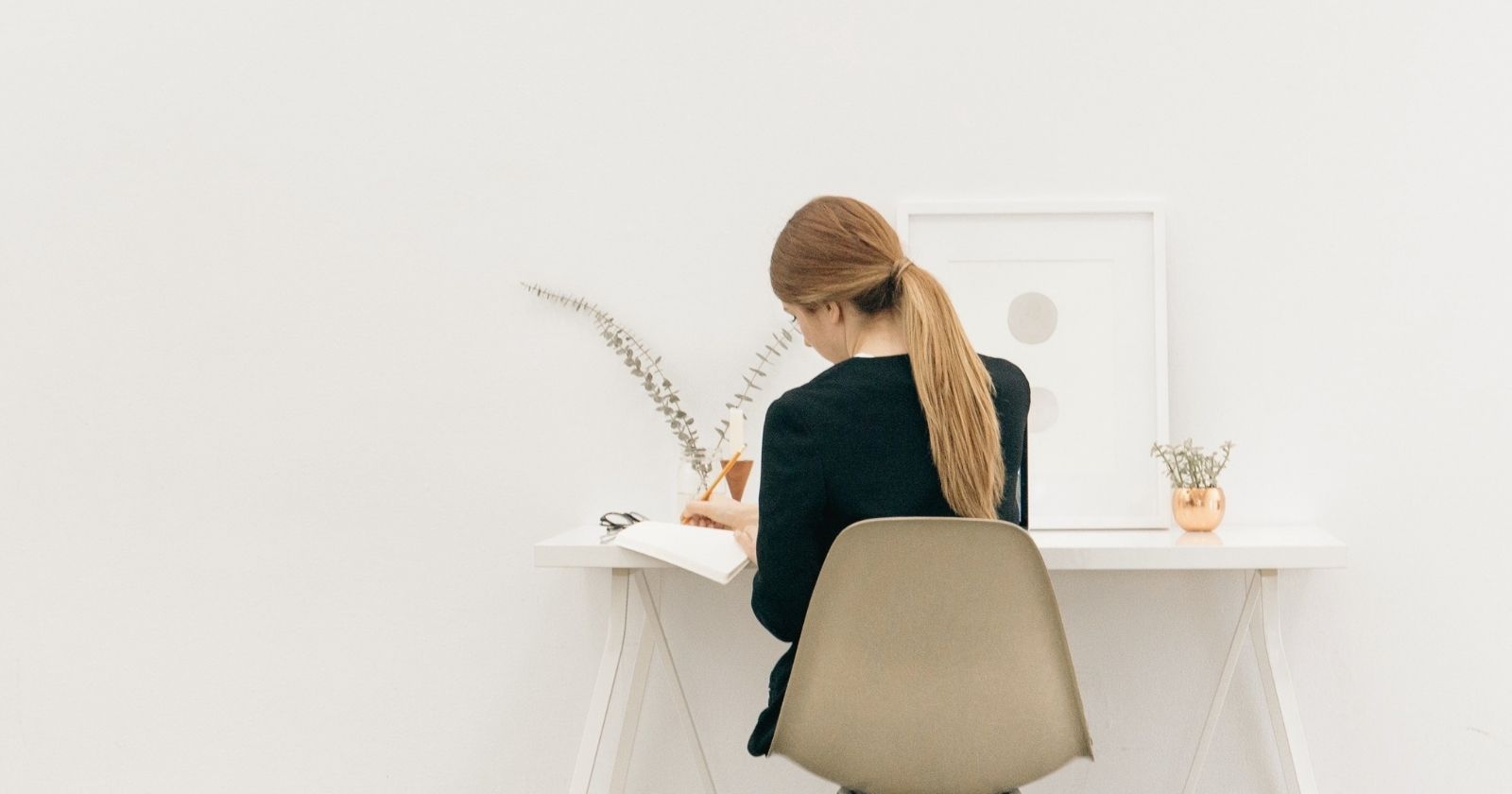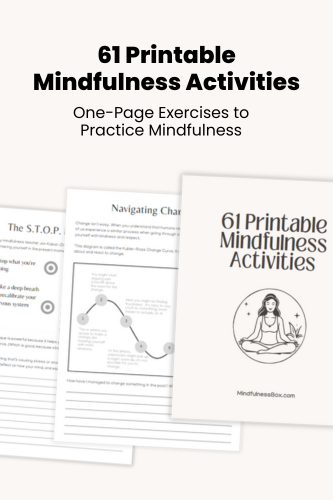Mindful minimalism is the art of striking a balance between buying less and not obsessing over buying less. It means owning fewer things, while at the same time, not becoming overly attached to the mission or identity of being “minimalist.”
I’ll explain.
For a good three or four years during the mid 2010’s, my dream was to one day live in a tiny house.
Get dozens of one-page exercises to help practice mindfulness, meditation, gratitude, and self love. Perfect for printable handouts when teaching mindfulness to groups, students, or in the workplace.
To see examples, plus a full list of the 61 exercises included, click below.
I read tiny house blogs, watched tiny house YouTube videos, and generally fantasized about packing up and “living tiny.” Believe it or not, I even went to a tiny house convention. (Yep! They exist, and they’re pretty fascinating).
Driving this was a feeling that the standard American dream that’s peddled in movies and on television wasn’t for me. The thought of living in a McMansion, with all the home repairs and lawn maintenance that goes with it, made me want to do everything in my power to prevent that outcome. Even worse was the idea that I’d be working years of my life to pay for the privilege.
So, I saved and lived simply. I had incredibly few pieces of furniture or decorations. For a while, I made it a point of pride to eat beans and rice as much as possible.
I guess what I’m saying here is this:
Minimalism comes easy to me. But I also know (from experience) when it’s gone too far.
So if you’re wondering how to live a life with less stuff, in a way that’s reasonable and sustainable, I’m your guy.
Let’s dive into some strategies for buying and owning less stuff, while at the same time, not falling into the trap of attachment towards the philosophy of minimalism itself.
Two paths to living with less
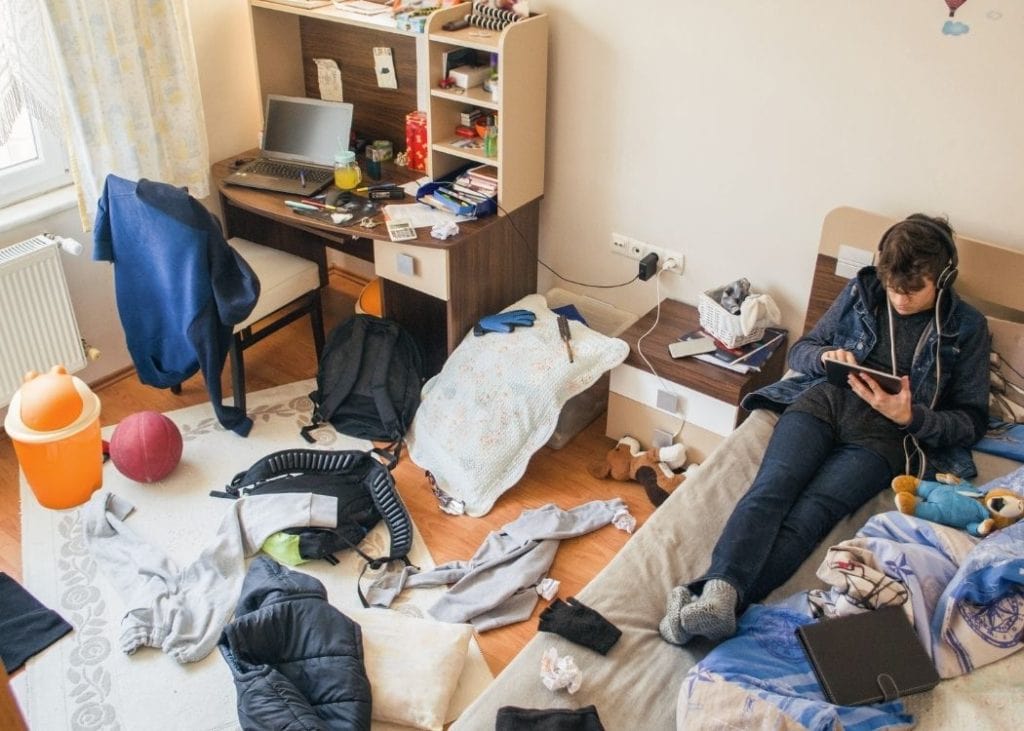
Let’s be real – a lot of us are minimalists because we like it.
Sure, you hear the stories of the people who were packrats and now live simply, having donated all of their things to charity. They make addictive TV shows about exactly this.
But many of us who’ve gravitated towards a simple lifestyle were always the beans-and-rice type.
If you are, being minimalist is easy. You just need to watch out for attachment to minimalism.
If you’re not, becoming a minimalist may take time. Depending on your personality, you may prefer to start slow, or do a dramatic, weekend-long transformation of your home.
In the next section, I’ll be directing my commentary mainly towards people who are considering being minimalist, but don’t gravitate towards it naturally.
How to live a minimalist lifestyle
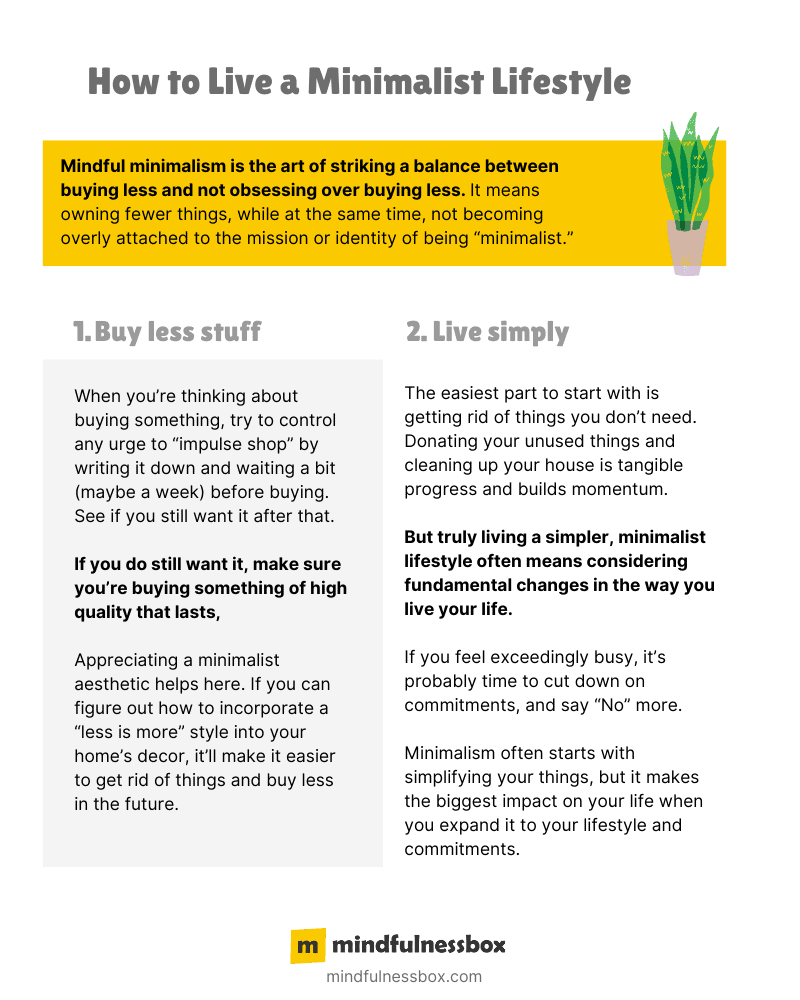
Generally speaking, minimalism consists of a couple of elements:
1. Buying less stuff
In my experience, buying less stuff is the more straightforward of the two.
When you’re thinking about buying something, try to control any urge to “impulse shop” by writing it down and waiting a bit (maybe a week) before buying. See if you still want it after that.
If you do still want it, make sure you’re buying something of high quality that lasts.
If your new item replaces one (or more) things you already have, even better.
Appreciating a minimalist aesthetic helps here. If you can figure out how to incorporate a “less is more” style into your home’s decor, it’ll make it easier to get rid of things and buy less in the future.
2. Living a simpler lifestyle
Living a simpler lifestyle can be more complex than buying less.
The easiest part to start with is getting rid of things you don’t need. The KonMari method is a popular way to approach keeping only what’s necessary.
Donating your unused things and cleaning up your house feels like real, tangible progress, and can keep your motivation high as you go into the less tangible elements of your life.
But truly living a simpler, minimalist lifestyle often means considering fundamental changes in the way you live your life.
For example, if you’re commuting an hour or more to work, one way to simplify your life would be to get another job closer to home, or to find a way to go remote.
If you’re overwhelmed by the noise and chaos of the city you live in, it might be time to relocate to quieter pastures.
If you feel exceedingly busy, it’s probably time to cut down on commitments, and say “No” more than you say “Yes.”
Minimalism often starts with simplifying your things, but it makes the biggest impact on your life when you expand it to your lifestyle and commitments.
Why minimalism isn’t a shortcut to mindfulness
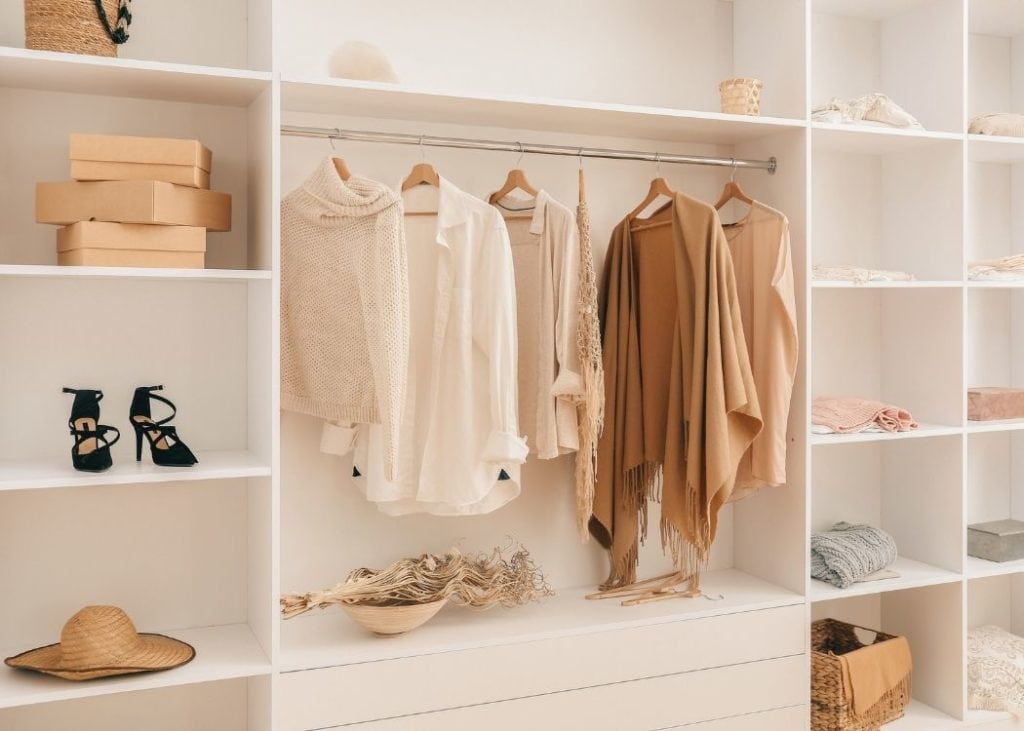
Getting clean and organized, buying less, and reducing your commitments feels good, but be warned:
Your mind might still be messy.
Minimalism means you have fewer things and fewer activities to manage, which means theoretically, you have more bandwidth to be present in your life.
In reality, you may replace one problem (too much stuff, a messy household, a chaotic life) with another (the fantasy of control).
Even when you possess very few things and have an empty calendar, your mind can be racing and you can be entirely not present.
That’s why minimalism isn’t a shortcut to mindfulness. It’s just as possible to be a mindful person who owns many things and lives in a cluttered home.
But, some may find that minimalism is a helpful aid on their mindfulness journey.
At the very least, the act of asking “do I need this?” when shopping or asking yourself “Do I really want to commit to this event?” can take you off autopilot mode for a minute.
Minimalism can nudge you into a state of greater awareness of what you’re doing.
Minimalism isn’t a religion
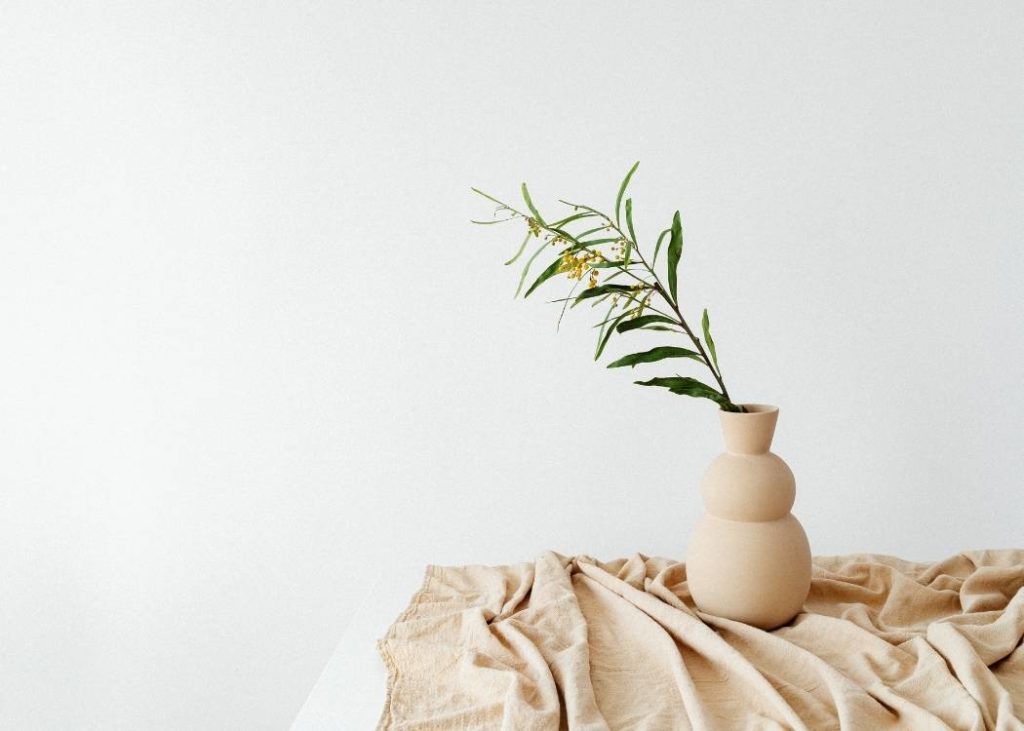
When you start to orient your life around a new philosophy, it’s easy to fall into black-and-white thinking.
With minimalism, the temptation is to start to see “stuff” as inherently bad and to become less flexible as you become more attached to the identity of being a minimalist. And attachment to ideas can fill our minds with worry just as much as attachment to stuff.
I get it. I held onto the fantasy that if I bought very little, saved enough money, and then moved into a tiny house, I could retire early and live a simple life. And then I’d be happy.
Of course, that’s not the way life works. After getting married, I no longer want to live in a tiny house. I’m now dreaming about a house with a yard and a small pool.
I still prefer a minimalist aesthetic and think twice before buying something new, but it’s not an obsession. And although I think I could be happy in a tiny house, I’m happy with the direction my life has headed.
Getting started with a minimalist lifestyle
Ready to take the next steps in your minimalist lifestyle?
My advice to you is this:
Start slow. Buy a little bit less than you used to. Let products linger in your Amazon cart for a week before buying them. Make sure you’re buying quality products that’ll last a long time. Do a KonMari-style inventory of the things you have, and get rid of what you need.
After you’ve handled the physical side of minimalism, look at your lifestyle. Where can you simplify? If your life feels chaotic, what could you start saying “No” to? Are there areas of your life where making changes would have an outsized impact on your peace of mind?
And remember – be flexible as you embark on the journey of simplifying your life.
Some of us are meant for tiny houses, and some of us prefer something bigger. But, as with many things, there may be a season for each.

My mindfulness practice kicked off in 2016 with a ten-day silent retreat. Since then, I’ve read dozens of books about mindfulness and completed hundreds of hours of meditation. Thinking about what makes humans happy, calm, and peaceful is endlessly fascinating to me.

